Winchester's Model 70 Super Grade
other By: Stan Trzoniec | January, 26
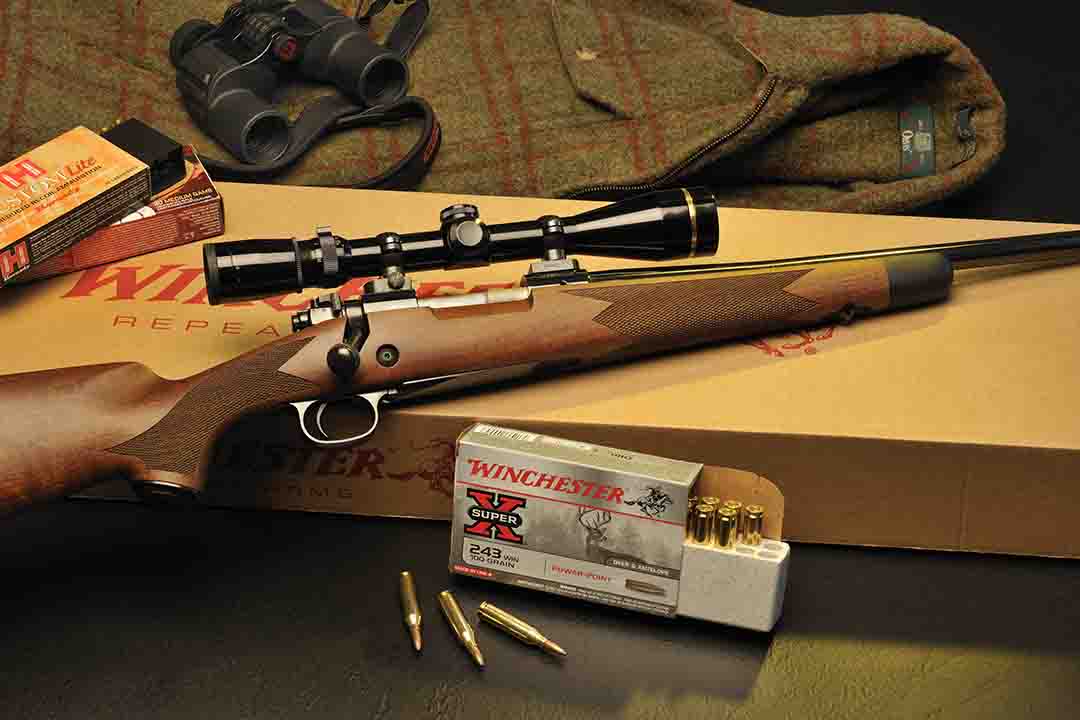
Almost a dozen years later, enter the Model 70. From 1939 to the present time, the rifle has become a legend in its own time. The action appealed to a great majority of hunters and sportsman, collector’s clamor for it at shows, and ask any custom rifle builder what the number one choice for barreled actions requested by customers is, and it will be the pre-64 Model 70.
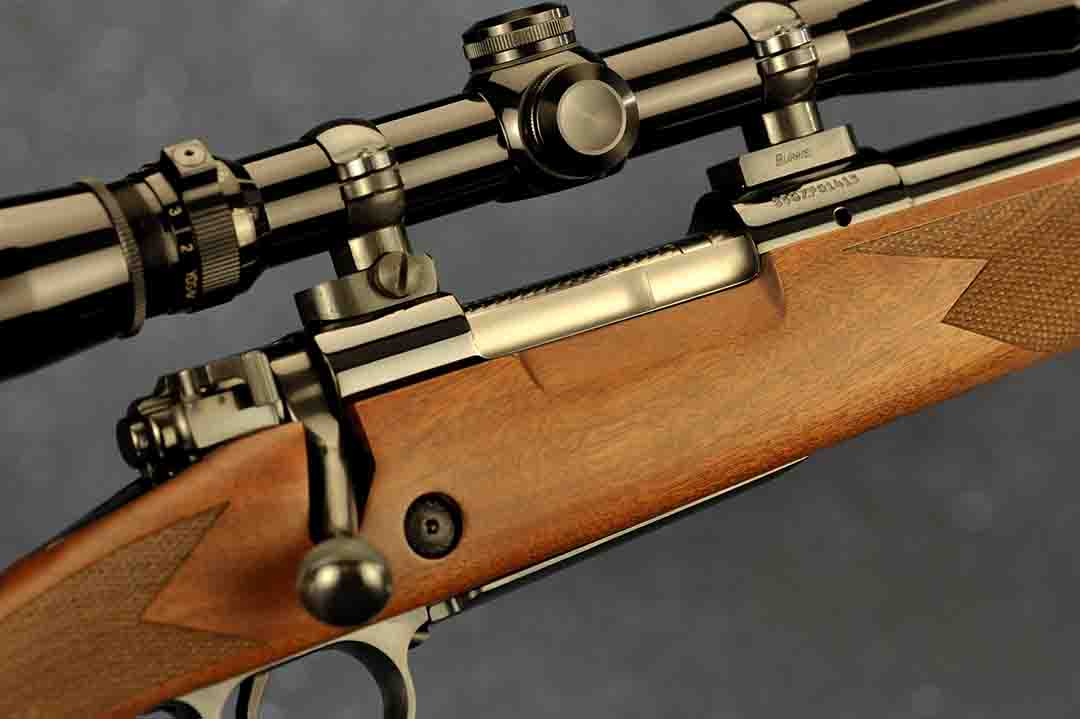
Since then, dozens of model variations and calibers have flowed through customer hands. From the Standard Grade to Featherweight to Varmint and big bore, big-game guns like the Safari or Alaskan, there was (is) a model for all hunting needs. If that wasn’t enough, at one time the famed Winchester Custom Shop, located in Connecticut, was turning out some handsome weapons for those looking for something different. The same goes for a long list of cartridges that started with the .22 Hornet and working up to the .458 Winchester Magnum, including some limited run models in .358 Winchester, among others.
The year 1964 brought on a new Model 70 that the parent company hoped would overshadow the previous model. Much to the chagrin of the company, the rifle did not do as well as expected. To the masses, they simply took a fine rifle and instead of bringing it up to new and improved standards, seemed to have downgraded it. No one jumped on the bandwagon with praises, for the gun sported a new action, trigger guard and bottom metal, a stock with of all things, impressed checkering and the abandonment of the full-length extractor.
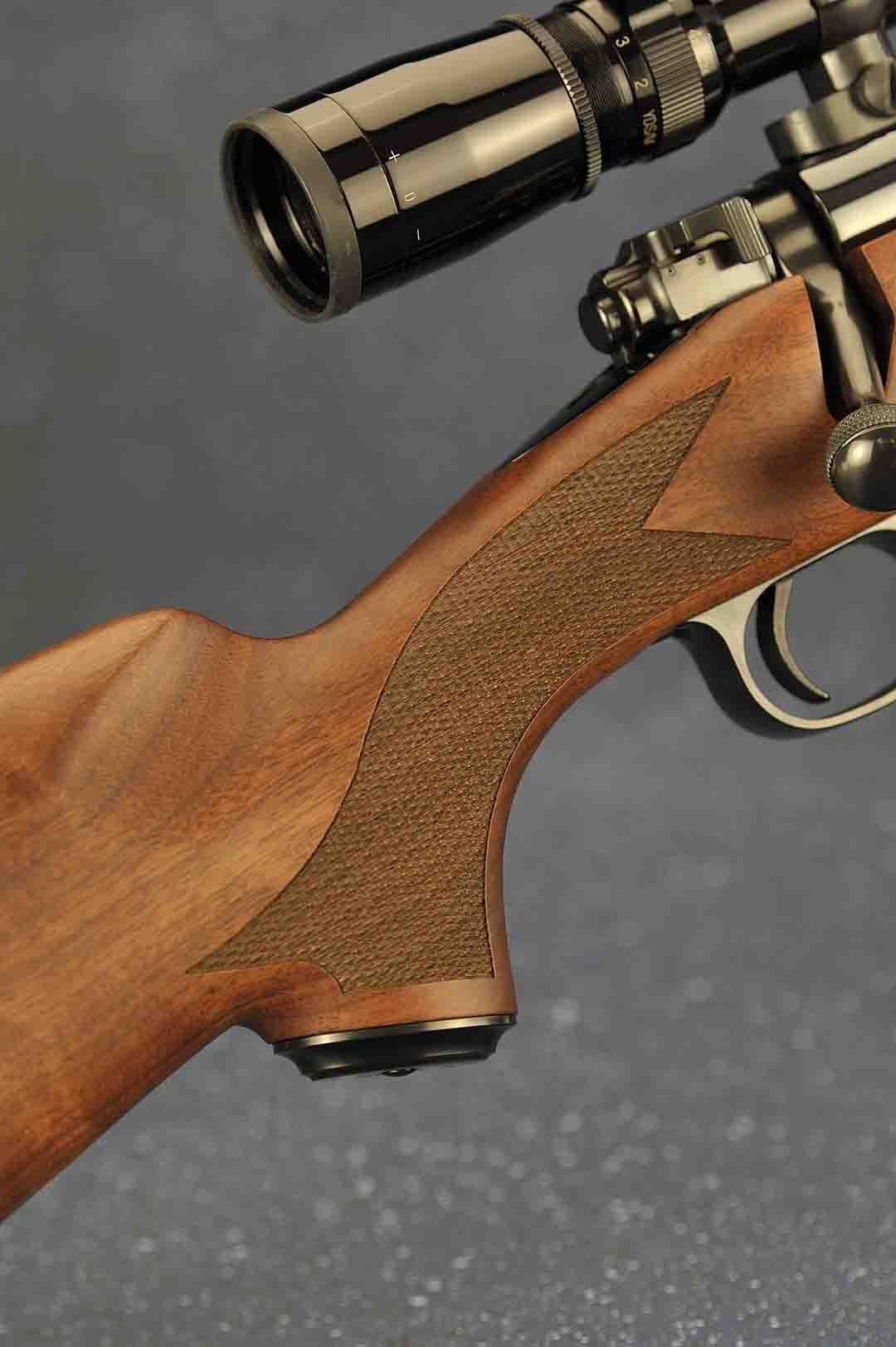
Present day Model 70 rifles come in a wide variety of models and cartridges, but the “Super Grade” has always caught my eye as my interest in custom/production rifles never seems to wane. To me, these guns are those set apart from others in the line with better wood, highly-polished actions and crisp triggers, and of course, a higher price tag. The catalog shows 13 models from the .243 Winchester to the bigger bores like the .300 and .338 Winchester Magnums with barrel lengths to match. At the 2020 Shot Show, a few more guns were shown, available in limited quantities to include Super Grades in AAA Maple, AAA French Walnut and a stainless version with Grade IV/V walnut.

Seemingly, the Super Grade has taken over as the Standard rifle of the past and continues in the tradition of the famed Model 70. History on the Super Grade from The Rifleman’s Rifle by Roger C. Rule shows an introduction in 1936 with a footnote added to the effect of that it is “Built in general the same as the Standard Grade with these refinements. Stock of selected walnut with or without a cheek rest, hard rubber grip cap, black molded forestock tip and fine checkered grip and forestock.” For the most part, this has remained the same today.
Out of the box, buyers paid for one handsome rifle! I have to say, that holding the rifle out at arm’s length; the lines of the stock are beautifully proportioned. I am a big fan of the classic-styled stock and from the ebony forend tip to the cheekpiece, the design team at Winchester sure earned their pay. Advertising stated that the stock is profiled from Grade V or VI Black Walnut, which is correct most of the time, but the figure is limited on this gun. While there is a touch of a muted fiddleback pattern, Super Grade’s I have tested before had a lot more. Not a big thing as there is a large number of these Model 70’s on the market and choosing one to your liking is not going to be hard, especially in the larger sporting outlets. Other than that, the stock has a nice dark color with the grain running up towards the forearm consistent with the future stability of the wood over the years. The stock is finished in a rich, oil-type patina with a more than ample checkering pattern cut to 20 lines per inch on both the pistol grip and forearm.
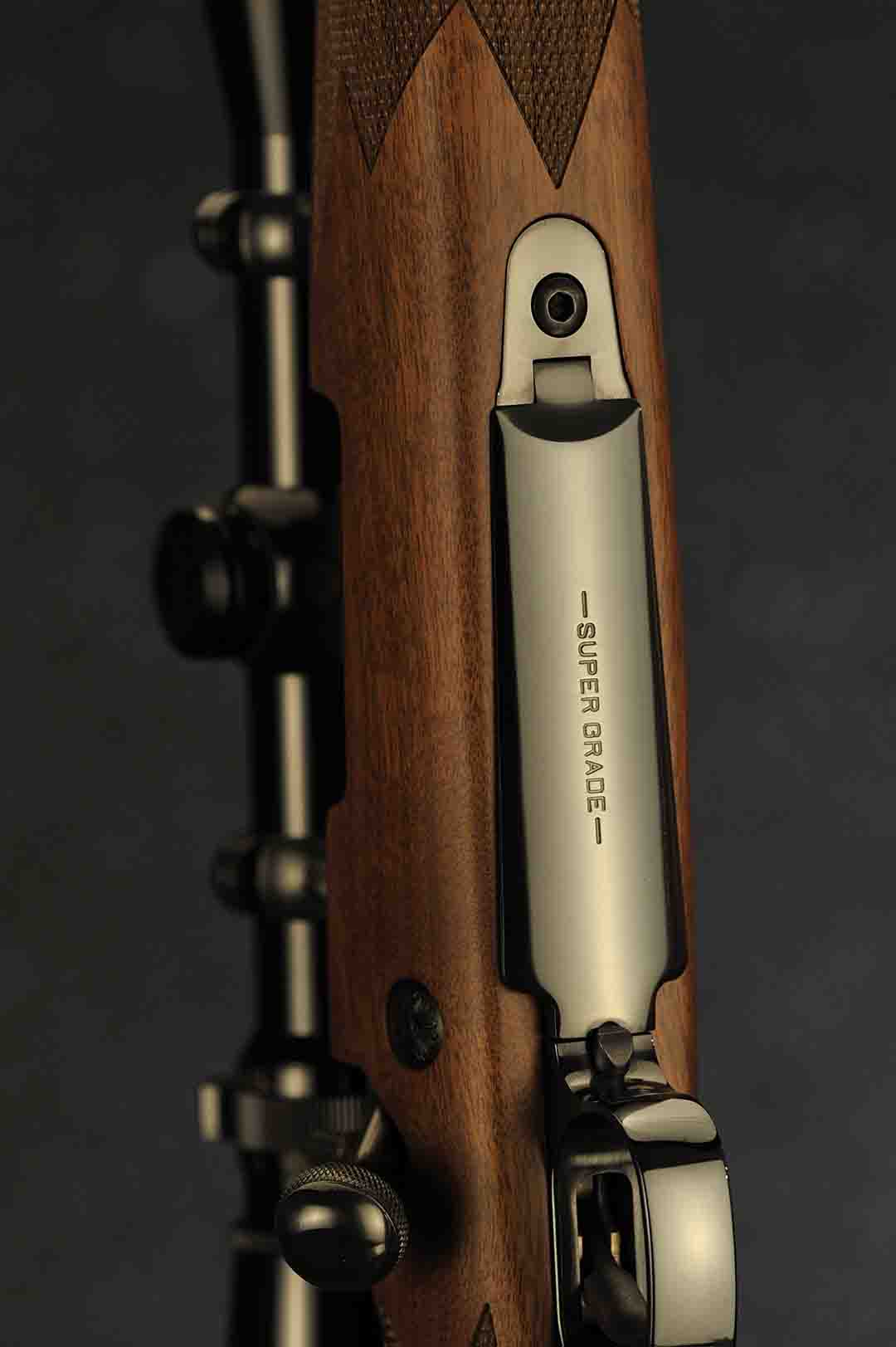
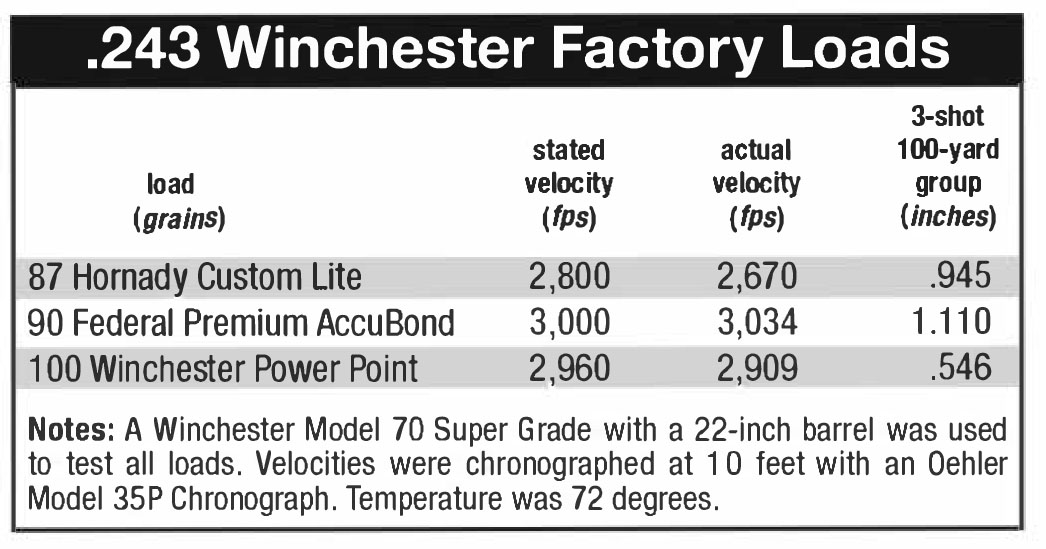
On the Super Grade, Winchester went out of its way to make the gun distinctive and a standout from the crowd. When it comes to the buttstock, there is no line disturbing Monte-Carlo, but the cheekpiece is unique to many in the fold as it has a custom-looking shadow line. For shooter comfort, and again, an added feature, the stock, a small amount of cast-off to the right that makes aligning the eye to the scope reticle a no-brainer. Finishing off, a Pachmayr classic-styled decelerator pad with a black spacer and an inletted sling swivel stud completes the stock.
The barreled action on any gun is what makes it all come together, and in this regard, this Super Grade has no equal in this price range. Chambered for the .243 Winchester, the sporter weight barrel is 22 inches long, free floating, has a recessed target crown and the bottom metal is all steel with a hinged floorplate and trigger guard mounted on a one piece frame. Typical of this gun, and since its inception in 1936, the words “Super Grade” are engraved on the floorplate. The trigger face has a natural curve to it and is smooth in finish. Winchester’s patented MOA trigger system seems to be the highlight of the gun and broke at 4.5 pounds. While to many this may seem like a heavy pull, believe me it felt much lighter. This is because this system has zero take-up, zero creep and zero overtravel and the technicalities of this system are so interesting you might want to read about it in their printed matter or online. It’s worth a few minutes of your time, especially if you are in the market for one of these rifles.
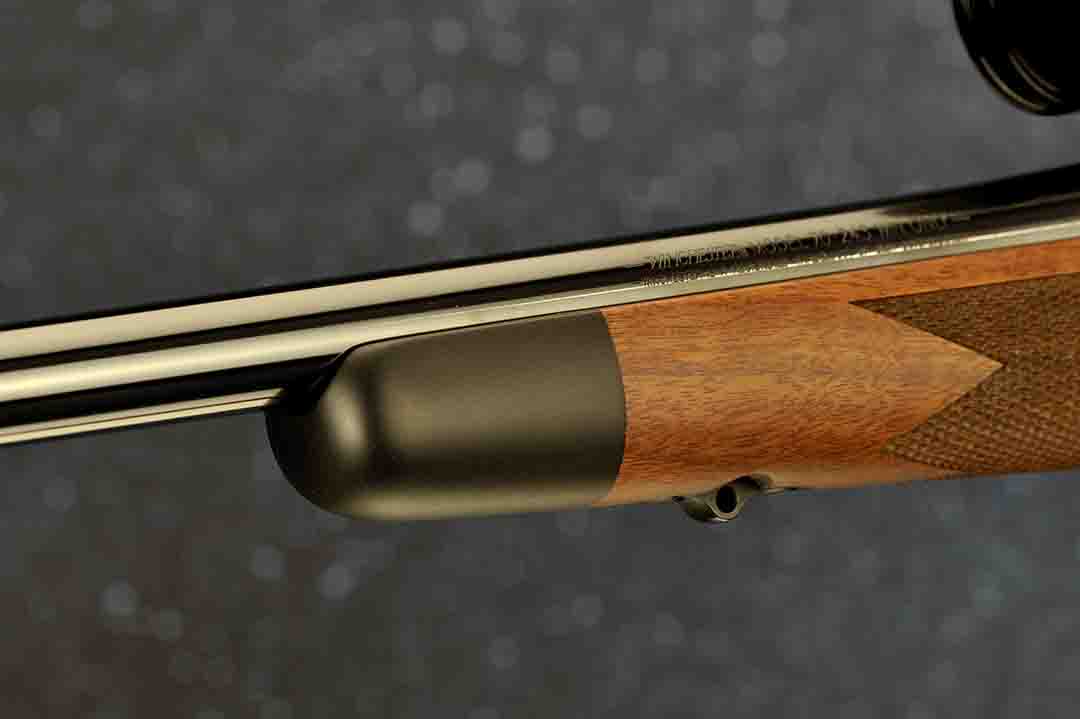
Like everything else on this gun, the forged receiver and related parts are steel, polished bright and deeply blued, adding a bit of class to this gun. Inside, there is a forged integral recoil lug that is bedded both front and back to eliminate any change in zero over the life of the gun. This recoil lug is machined as part of the receiver and not added on during assembly as a washer or spacer, keeping everything in perfect alignment front to back. Added to all this, there is a decorated steel crossbolt for strength and rigidity at this part of the stock.
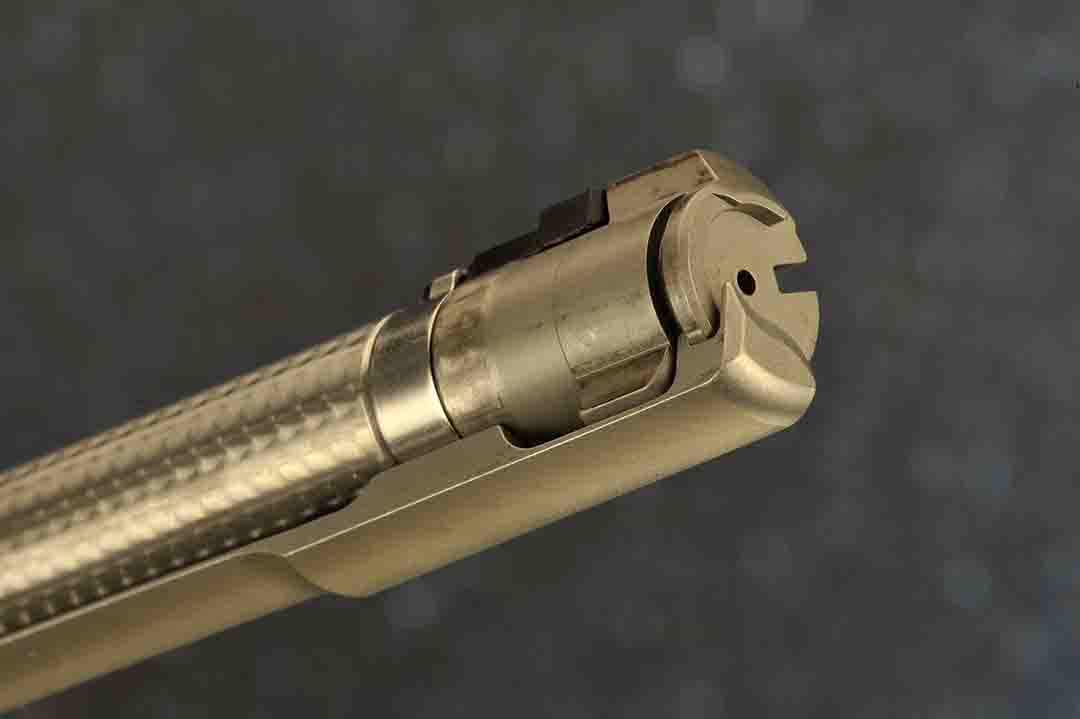
The bolt is removed by pushing down on the release on the left side of the gun. Operation of the bolt is smooth and straightforward and cycles on the controlled round feed and claw extractor principle. Looking at the bolt face, twin-locking lugs secure the bolt to the breech while the massive extractor makes sure the spent cartridge is withdrawn from the polished chamber. The bolt body is jeweled and is the same diameter back to the bolt handle that incorporates a knurled bolt knob. At the rear of the receiver, a blade-type ejector can eject the spent case easily for target shooters who want to keep their brass or forcibly for those who might need a follow-up shot quickly.
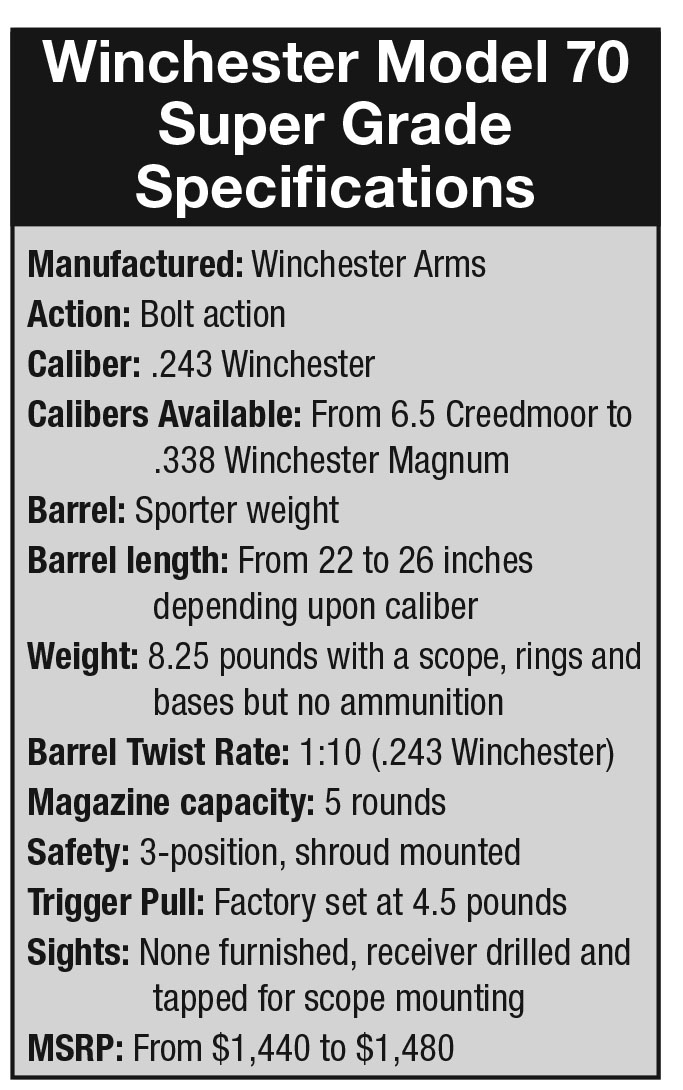
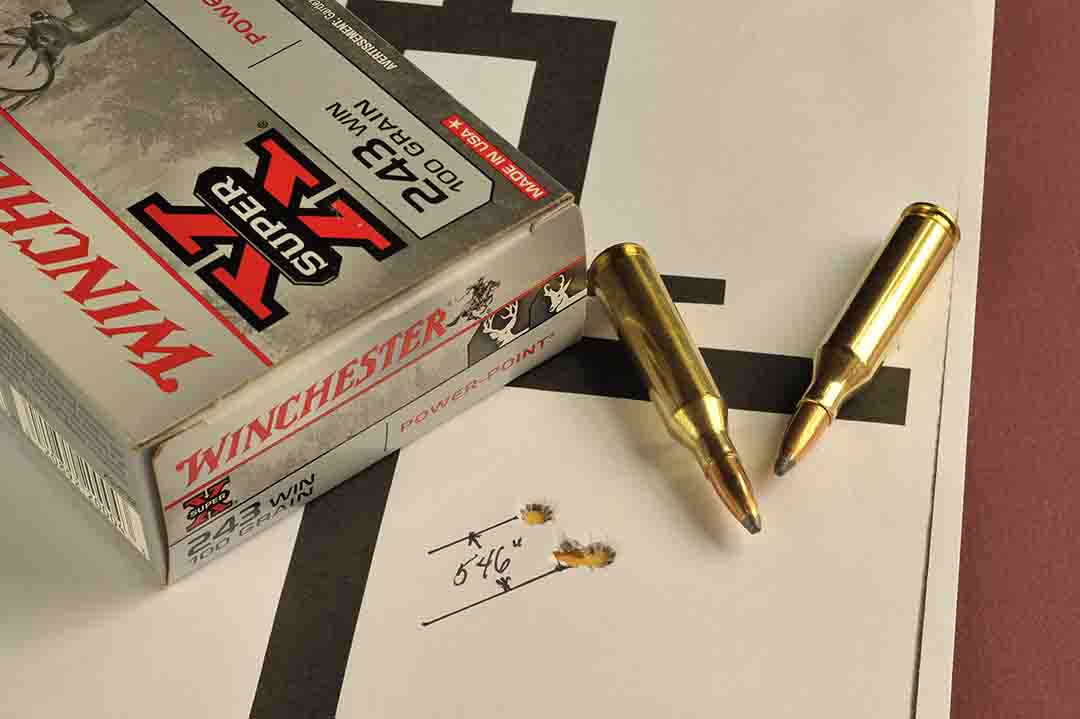
On the range on a quite summer morning, both the rifle and factory ammunition showed their mettle. The rifle was a pleasure to use in operation and never missed a beat in loading or ejection loaded one at a time or from the magazine. While Winchester Model 70s for the most part have always been on top of their game, the newer versions like the Super Grade show what modern technology and machining can do. From the bench, recoil is always pleasant with the .243 Winchester and groups fell into place consistent with this cartridge over the years. Group sizes shown here are the best groups of the morning.
With factory ammunition, groups hovered around or below an inch, which is no surprise. Hornady’s Custom Reduced Recoil brand came in at just under an inch with a noticeable reduction in the apparent recoil sensation. Perfect for teaching purposes or for lesser game where distance is not a big factor as velocity is a bit below the customary 3000 fps mark. With the Federal 90 grain Premium AccuBond, we stayed around an inch and with velocity pretty much true to their specifications, it could prove to be an all-around load from larger, smaller game to plains game. The prize of the day went to its own Winchester 100-grain Power Point with the best group of the session coming in at a half inch.
The Model 70 Super Grade is one heck of a rifle. It’s good looking, follows the lines set by the old masters, is priced fairly and accurate. Besides all this, it’s a Winchester!

